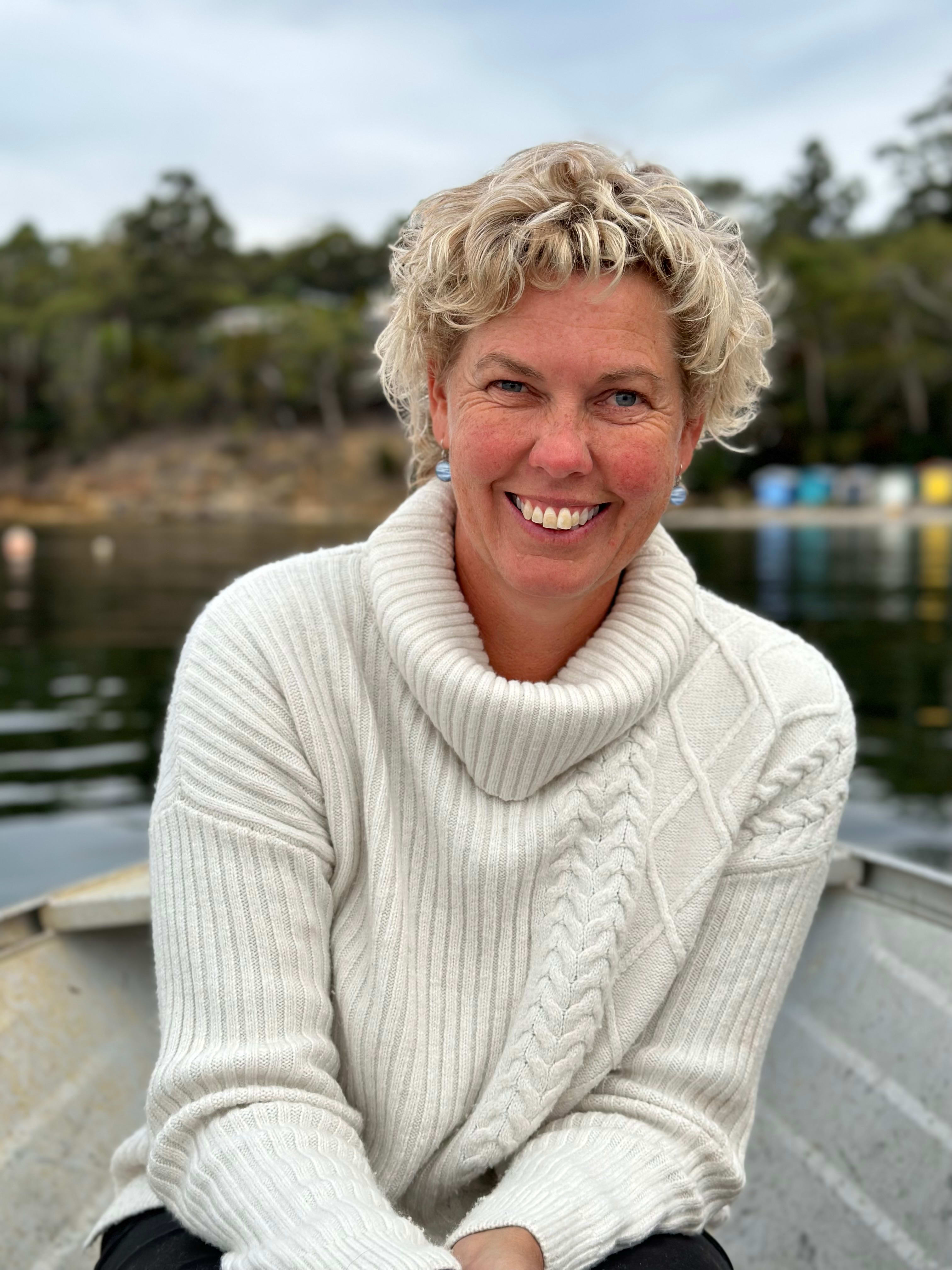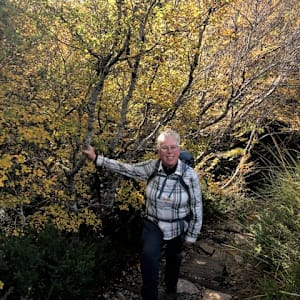Five weeks after I walked away from my academic career in America, I was on stage at the Theatre Royal in Hobart, preparing to sing in four-part harmony with 65 strangers. I’d never sung in a choir before.
I couldn’t read music, and the thought of performing in front of a live, paying audience of several hundred people made my mouth dry. I had practiced all morning, anxious not to stuff things up. Now I couldn’t remember a single word. Time seemed to fall away and all memory shrank to the pool of blue light that flowed over us, our outlines shifting and merging together.
The curtains rose, we breathed in, and began.
Hobart’s Festival of Voices is an annual, two-week extravaganza of vocal workshops, pop-up harmonies, and boisterous singalongs in pubs and city parks that keeps the city warm in the depths of mid-winter. Since 2004, it has attracted soloists, choirs, cabaret performers and ordinary people from around Australia and overseas to share in the shamanistic joy of singing together. This year, about 30,000 people showed up to join in the fun. This year, I was among them.

Scrolling through the online program of events, my eye had fallen on a workshop called “The Power of Harmony”, offered by the award-winning a cappella quintet The Idea of North. My aunt had taken me to see them during a brief visit home a few years before, and I was astonished by their technique. They sang intricate arrangements and playful reinventions across a range of genres – pop, jazz, folk, and gospel. There was toe-tapping, laughter and singalongs. And then there was a rendition of Cold Chisel’s Flame Trees that haunted me for days. Easing into the story with nostalgic rhythm and interweaving harmonies, the melody wound its way up my spine and wrapped itself around my shoulders, when suddenly the final chorus dropped into my stomach, their voices fused together into an electrifying shout. My heart kicked over, and a fist of tears closed around my throat.
How could human voices do that?
. . .
Lying in bed in my mother’s house overlooking the South-West Wilderness of Tasmania, I listened to the birdsong I’d missed every morning for the past 10 years. The tiny chirrups of the flame-breasted robins. The raucous guffaws of the kookaburras. The weird strangled spasms of the native hens woke me before dawn, and half-asleep, I wondered why someone would be strangling a rubber ducky outside my window.
Biologists have found correlations between the acoustic patterns of birds and the linguistic structures underlying human grammar. Did our language evolve out of song? Might singing enable flight?
In the American Mid-West, my accent was a daily conversation-starter. “You’re not from round here,” smiling strangers informed me in the supermarket, the café, the classroom. “Where are you from?” At first I took satisfaction in being an outsider, a resident alien with a funny inflection. But as time passed, I began to notice that my voice felt trapped, nervous, unconvincing. On a Skype call home, I laughed with the wrong sound in the mouth.
They say if you can talk, you can sing. I wondered how true that was, and if my unreliable voice could hold up to scrutiny.

Taking my seat in the Peacock Theatre in Salamanca, I was nervous. I imagined everyone would be conservatory-trained choristers, brushing up a cappella skills between Bach rehearsals. I struck up a conversation with the young woman sitting next to me. She had attended the same workshop two years ago, and said I was in for a treat. She wasn’t in a choir, but loved music, and was studying medieval history at the University of Tasmania. This filled me with a mixture of delight and recognition, and apprehension for her future, and mine.
An older man behind me introduced himself as a member of a local a cappella group that met once a week. He liked singing okay. What he really loved was how everyone in a choir became one big family. I told him this was my first time, and his eyes opened wide. “Where are you from?” he asked. I was from Melbourne, I said, but had been living in the US for the past ten years. “Ah,” he said, “I thought I detected a trans-Atlantic twang!” I laughed, but my face turned away as if I’d been stung. Perhaps some part of home would always be unachievable, irretrievable.
Our instructors arrived and welcomed us warmly. Nick Begbie stood tall and slim in a blue hoodie and jeans, with a winter beard and smiling eyes. He introduced himself as the tenor and last remaining member of the original Idea of North, which he’d co-founded at the Canberra School of Music 25 years ago.
“And look, he’s only half-grey!” grinned Naomi Crellin, taking her place at the piano. She was dressed smartly, with black-framed glasses and a brown bob. Her eyes sparked with intelligence and encouragement. Crellin sang alto and had studied music at university, so she knew how to read it (which, she whispered conspiratorially, Nick could not). Nick rolled his eyes and we laughed, and I felt my shoulders soften. I didn’t know what my voice could do, just like I didn’t know what I could do. But as I sat there taking in the warmth of the room, something felt possible.
A few nights later, my vocal chords still tingling, I went to hear The Idea of North premiere their new show, Harmonic Histrionic, at the Theatre Royal. The program explained how they had recently recalibrated their own collective voice when two of their long-term members (bass Andrew Piper and soprano Sally Cameron) left the group in 2017, replaced by bass Luke Thompson and soprano Emma Rule. They had also added Japanese vocal percussionist Kai Kitamura, who combined a mellifluous baritone with all the thrums, kicks and shimmers of an acoustic drum set. Their new repertoire charted the history of music, progressing chronologically from medieval Gregorian chant to Renaissance polyphony, to the loose swing of modern jazz and the sparkly beats of modern pop. The whole show was a reminder of how mercurial, how transformative, how resilient, the human voice could be.

. . .
“Sing it one more time,” Nick said after our final run-through, “but now with limerence.” Over the course of those four days in the workshop we had tuned into each other, carried each other, exhaled into each other’s harmonies, until we were no longer 65 people singing, but one large voice expanding to fill the room. It felt a lot like love.
I learned that my tongue, teeth, throat, nose and lips, not to mention various lesser-known muscles and membranes known only by Latin names, could be tapped, vibrated, clenched and fluttered to produce sound combinations I never knew I could make. These instruments came into play only with the coordination of the diaphragm, abdominal and chest muscles, lungs, larynx and rib cage. I’d never thought of them as part of my “voice” before. But the more I became of aware of them, the more I began to think about my voice differently. It wasn’t just a sound coming out of my throat. It was more like an electric current firing through my nervous system, circulating through my blood like oxygen.
I knew I had vocal chords, but never understood the significance of having vocal “folds”. In fact they are two terms for the same set of mucous membranes that stretch horizontally across the larynx like the curtains of a circus sideshow tent – only “folds” made me think of a flower bud curled tight within my throat, ready to fling open when I sang. What’s more, I had “true” and “false” vocal folds, the latter referring to the mucous membranes that sit just above the more delicate “true” folds, and were often used by Mongolian throat singers and death metal vocalists to drag up deep, primal, other-worldly sounds. I thought I was well-travelled, but it turned out my body held a hidden landscape I had never explored.
I learned that singing in harmony means holding true to your own note while others sing above, below, and in between.
I learned that silence allows for uncertainty. It gives us time to breathe.
As the days went on, I felt the muscles in my throat stretching to fill a space I had never given awareness to before. “I’m glad I’m standing next to you,” the woman beside me whispered in rehearsal. “You’re hitting all the right notes!” I laughed and said that was unlikely, since this was my first time singing in a choir. A look of astonishment flashed across her face. “No! Really?” The woman on the other side of me chimed in, agreeing we should stand together at the final performance “so you can keep us both in tune”. I blushed.
If there were a kind of therapy for people ashamed of their voice, maybe this was it.
Rayne Allinson is a writer and teacher with a PhD in History from the University of Oxford. She has worked and travelled in many parts of the northern hemisphere, and is now based in southern Tasmania.
Christine Mason is a professional landscape photographer based in southern Tasmania.







